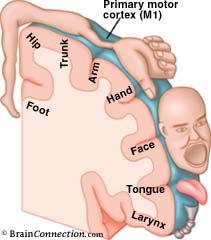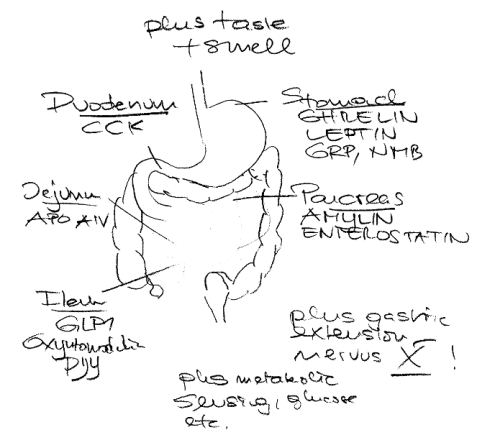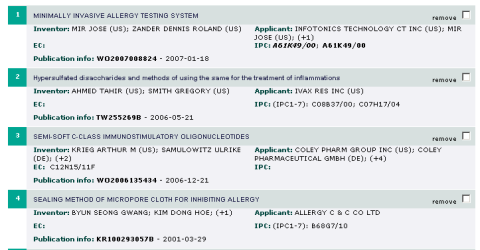sorry, typo. Press telegram reports that the geneticist William French Anderson was sentenced yesterday to 14 years in prison. The reason, however, was not doing premature human experiments but molesting his assistant’s young daughter, yea, yea.
Asthma – a disease of the gut
When starting in the asthma field in 1989, the textbooks told me that asthma is a disease of the lung. Some years later, asthma turned out to be a disease of the bone marrow cells. More recently, I raised the question if asthma could be even a disease of the gut – our largest immunological organ being frequently exposed to allergen & plenty of immunological active substances. Although on the different track (vitamin A) also other authors now think of an early impaired immune gut response.
Rather unexpected for me was a study in J Steroid Biochem Mol Biol that 1,25(OH)2D3 inhibits in vitro and in vivo intracellular growth of the parasite Toxoplasma gondii. yea, yea.
Genes wanted
The NIH and Jackson ask for nominations of their gene targeting approach (see also A mouse for All Reasons and my previous comment on the 3 R)
KOMP is a trans-NIH initiative to generate a public resource of mouse embryonic stem (ES) cells containing a null mutation in every gene in the mouse genome. Both conditional and null knockouts are being generated. The purpose of this form is to gather input from the scientific community on which genes should have the highest priority for being knocked out.
The Cell paper also explains the hard to understand differences in knockouts
- targeted deletion
- targeted conditional
- trapped conditional
although I still have semantic problems to understand the nomenclature. Anyway my whishlist – you can do me a favor by voting for CYP27B1, VDR, CYP24A1, OPN, IL4, IL5, IL10, IL12, IL13, FLG, CCR5 and CCR9.
Addendum
You can also leave some input at the Environmental Genome Project.
Are science blogs dangerous?
Amnesty International reports that an Egyptian blogger is now facing up to 10 years in prison for criticizing Egypt’s religious authorities. A German blogger writing about constructing buses in China even faced an invitation to a court in Bejing. And everybody knows of Ellen Simonetti becoming famous for being fired by Delta.
A major difference of blogs to accredited journalism is also the limited capacity to respond to any prosecution: I don’t have any money for a lawyer while newspapers and journals can hire dozens.
Sure, science blogs are much less intrusive but there is always a risk that the empire will strike back; 99% of grant and paper reviews are anonymous.
BUT, there are good news – the blog community is large and always alert. As a science blooger writing on bad science you can now even get nice prizes – gratulations to Ben. Don’t forget that all students arriving in your lab have read your weblog first.
Refraining from all activities also involves some risk, yea, yea.
Let vitamin D shine in
said the Denver Post giving a nice overview of vitamin D research. This was just 1 day too early for a fascinating nature immunology paper (scienceblog:doi:10.1038/ni1433:) that links for the first time natural sunlight induced vitamin D action on dendritic cells. Seems that D3 will influence homing of T cells – we are again at “Licht und Leben“, yea, yea.
Addendum
- Don´t miss the nice talk by Dr. Vieth at insinc
- D3 induced Th1 block will allow Th17 action that is credited for causing and sustaining tissue damage
- D3 induces cathelicidin in another study.
- Deutschlandradio reported the vitamin D – allergy story on Feb 10, 2007.
Poverty: word spread
In October 2007, PLoS Medicine together with 100 other journals will publish a special issue devoted to poverty and human development – details are at Gavin Yamey’s blog.
Resilience
Yesterday I heard for the first time of this psychology term. It describes how humans cope with stress, anger or other negative events – even over long time periods. Some people give up but others still grow (“skipjacks”). Seems that this trait can be immedately tested in scientists ;-) there is even a journal Disaster.
Supersize me II
Some of you may remember the fake food hypothesis that relates the obesity epidemic to the introduction of highly processed industrial food. JCI now has a nice review on the satiation signal and the complex system that may be disturbed.
Microbe content might also be important in this context click | click | click, however, even the adoptive transfer might be a secondary effect – everything in biochemistry follows mass equilibrium constants. The poorer resorption in the lean may lead to a different colonialization and vice versa. Will the adoptive transfer really show lasting effects longer than 2 weeks (in the mouse study)? Isn´t colonialization not influenced by diet (in the human study)?
Yea, yea.
XP system crash
I had to manage a system crash this weekend – where even the rescue console did not work. I learned that (1) my old Knoppix CD could neither write to the hard disk nor (2) read access a truecrypt partition. (3) Too late, I should have spent some money on ghost(r) or true image(r)! I further learned on the next day that (4) Bart PE does not work with OEM versions, (5) truecrypt versions are not compatible and (6) a grml iso is not helpful at the system prompt. Ultimately I came across (7) sysresccd that includes
- GParted: partition resize tool
- GNU Parted: a text tool for editing disk partitions
- Partimage: a partition image tool
- Plenty file systems tools allow you to format, resize, and debug an existing partition of your hard disk
- Ntfs3g allows you to mount your partition and get a full read/write access to the NTFS partition
- Sfdisk allows you to backup and restore your partition table
wow, simply a lifesaver.
Allergy and DC antigen processing: vitamin versus hygiene hypothesis
Last week Science has an update on differential antigen processing by DCs including a key sentence on immature DCs:
Cultured immature DCs capture antigen but only process and present it on MHC II after exposure to inflammatory stimuli or TLR ligation.
Although the authors were not aware of current allergy research, they perfectly summarize how vitamin D renders DC immature, while hygiene (infections or LPS farm exposure ) may antagonize it.
Enter without knocking if you can
This was posted at the door of Max Delbrück (1906-2006) in Pasadena – and quoted from the wonderful biography of E.P. Fischer his last Ph.D. student.
/-/
“Licht und Leben” (or “light and life”) is a wonderful narrative that I really enjoyed, with a lot of informative figures and tables.
I wonder why this biography never appeared in English, why neither institutes in Berlin, Cologne or Constance (where Delbrück teached) are even linking to it. E.P. Fischers book tells the story about an interesting man dedicated to science – who learned physics and applied sound principles to biology. “Enter without knocking” does not have any special meaning (as E.P. Fischer confirmed me) it was simply a rough-running door. Besides the biographical sketch and the detailed description of phages and phycomyces (p15) there are many moments in time that I really liked very much.
/-/
Hershey (with whom he shared the Nobel in 1969) should give a lecture and asked about the background of the audience. Max Delbrück answered by a postcard 6/1/1943: think of “complete ignorance and infinite intelligence” – the lecture became a success.
/-/
Delbrück always emphasized (p 148) that data should only be augmented by those who can put old data into new hypotheses. He even said “enough data” as thinking about current experiments is being as important as doing new ones. Both, thinking and doing experiments, should even be more important than publishing (his lifetime list has 115 items). Writing up results should serve as a method to connect what is currently known and what will be known. Delbrück even suggested to spend – “one day per week without pipettes”.
/-/
From an interview (p 240): “Genetic engeneering may possibly be a large thread for the future but possible also the biggest hope”.
/-/
Delbrück was a great admirer of Eliot, Rilke and of Beckett. Samuel Beckett in “Waiting for Godot” probably inspired “Licht und Leben” (p 260): “We give birth astride a grave, the light gleams an instant, then there is night once more.”
Addendum
Page 239 contains a mystery: In 1978 Delbrück gave a lecture at Caltech where he wanted to include a citation from Kierkegaard: “Wissen ist eine Sache der Einstellung, eine Leidenschaft, eigentlich eine unerlaubte Einstellung. Denn der Zwang zum Wissen ist wie Trunksucht, wie Liebesverlangen, wie Mordlust, in dem sie einen Charakter aus dem Gleichgewicht wirft. Es stimmt doch gar nicht, daß der Wissenschaftler hinter der Wahrheit her ist. Sie ist hinter ihm her. Er leidet unter ihr.” Delbrück, however, could not find the correct source, even announced to pay 50$ for it. I also looked at my library but couldn´t locate it – who knows the source?
Science of course and effective too
Most people in the field search Pubmed but there is another site that I frequently visit – the European patent database that often have more concise information. Look at current allergy patents – the last one will definitely work you may also use a big plastic bag ;-)
Be aware that being cynical is probably bad for your heart.
Badges everywhere
My favorite is the pink one that a sick child made me earlier in my career.
Le Grand Content
Attending several large conferences every year, I know what Andre at Youtube is talking about:
This has even a name – Powerpoint Karaoke, yea, yea.
Craving comes from the insula
You may renember the homunculus – a projection of body functions on brain areas. There is an interesting clinical extension stemming from 69 stroke patients of which 15 immediately, easily and permanently quit smoking. One patient said that his “body forgot the urge to smoke”. Sure, this analysis may still be somewhat confounded by the fact that certainly more areas are usually destroyed – but there are interesting approaches that could be followed up, the authors speculate about influencing sensory airway representation, neurotransmitter therapy and monitoring of smoking cessation programs. So stroke may help to quit smoking but I think there are better ways to do that. Seems that Science won this race with Nature. Yea, yea.
Addendum
Don’t miss the follow up.


